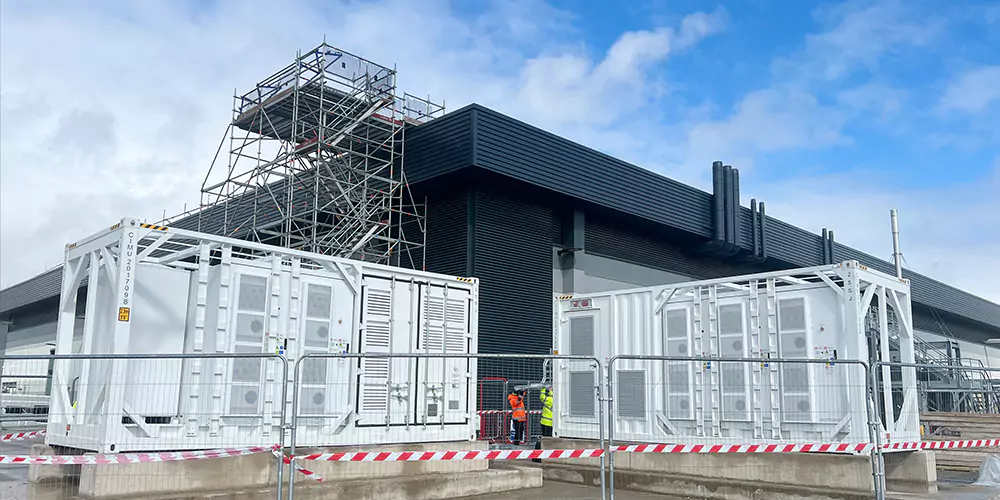Shanghai, China
+86-17317656853
inquiry@cgprotection.com



As a new type of energy, new energy is an important way to achieve the goal of carbon neutrality and an inevitable choice to promote the sustainable development of China's economy and society. While photovoltaic, wind power and other new energy power generation systems provide clean energy for the power grid, they also bring a large amount of power storage demand. Battery energy storage system ( BESS ), as an emerging form of power storage, has been widely used in the industrial field in commercial operation, but its safety and reliability have always been widely concerned. Battery energy storage system refers to a system that stores electrical energy for future use. Its working principle is to obtain electrical energy from the power grid and then release the electrical energy to the power grid through charging and discharging devices. Smart battery energy storage system ( Smart BESS ) is a complex power system involving multiple industries, multiple professions, multiple equipment, and multiple links.
Shanghai Chengge is also a senior expert in the field of electrical safety, and is well aware of the core position of battery energy storage systems in modern energy management. However, with the advancement of technology and its wide application, safety issues have become increasingly prominent. The following is a series of good practices for maintenance and safe operation that I have summarized based on many years of experience to ensure that your battery energy storage system operates safely and efficiently.
1. Preparation before maintenance
Before carrying out any maintenance work, make sure you have:
Read and understand all safety instructions and operator manuals provided by the manufacturer.
Equipped with necessary personal protective equipment, including but not limited to safety glasses, insulating gloves and protective clothing.
Ensure that all maintenance work is performed with the power off to avoid the risk of electric shock.
2. Regular inspection and maintenance
Battery status monitoring: Regularly check the battery's voltage, current, and temperature to ensure they are within the manufacturer's recommended range.
Cleanliness and ventilation: Keep batteries and energy storage systems clean, avoid dust and dirt accumulation, and ensure good ventilation to dissipate heat.
3. Safety operating procedures
Operator training: Ensure all operators receive appropriate safety training and understand how to properly handle batteries and energy storage systems.
Wear protective equipment: When performing maintenance work, wear appropriate personal protective equipment to protect yourself from injury.
4. Importance of Battery Management System (BMS)
Monitoring system: Use a battery management system to monitor the status of the battery, including voltage, current, temperature, and state of charge.
Fault diagnosis: BMS should be able to diagnose and report any abnormal conditions such as overcharging, over-discharging, overheating, etc.
5. Fire and explosion prevention measures
Fire prevention equipment: Install appropriate fire prevention equipment such as fire extinguishers and smoke detectors near the energy storage system.
Explosion-proof design: Ensure that the energy storage system is designed to prevent battery explosions, including the use of explosion-proof battery boxes and appropriate ventilation systems.
6. Battery Replacement and Recycling
Regular replacement: Replace aged or damaged batteries regularly based on their service life and performance.
Environmentally friendly recycling: Ensure that batteries are recycled and disposed of in accordance with environmental regulations to avoid environmental pollution.
7. Electrical safety
Grounding and Insulation: Make sure all electrical connections are properly grounded and well insulated to prevent electrical failures and electrical shock.
Electrical isolation: Ensure that the energy storage system is isolated from the grid to ensure safety when performing maintenance or inspection.
8. Environmental factors
Temperature control: The battery energy storage system should be installed in a temperature-controlled environment to avoid extreme temperatures that affect battery performance and life.
Humidity Control: Maintain proper humidity levels; excessive humidity can cause electrical failure and corrosion.
9. Contingency Planning
Emergency Response: Develop an emergency response plan so you can act quickly in the event of a fire, leak, or other emergency.
Regular drills: Conduct emergency drills regularly to ensure that all personnel are familiar with emergency procedures.
10. Compliance with regulations and standards
Comply with regulations: Ensure all operations and maintenance activities comply with local safety regulations and industry standards.
Continuous Updates: As technology develops and regulations change, maintenance and safe operating procedures are regularly updated.
11. Records and Documentation
Maintenance Records: Maintain detailed maintenance records including dates and results of inspections, repairs, and replacements.
Operator Manuals: Ensure all operators have access to the latest operator manuals and safety instructions.
As a company focusing on the safety and emergency industry, focusing on the research, development, production and sales of emergency rescue equipment, personal safety protection equipment, special functional protective clothing, safety tools, electrical fire protection and safety emergency new materials, and also an integrator of MRO products and services related to the safety and emergency industry, We strongly recommend that all users regard these safety measures as an integral part of maintaining battery energy storage systems. Safety is not just about following the rules, but also a responsibility and culture. Let us work together to ensure the safety and reliability of battery energy storage systems and contribute to the future of sustainable energy.
Tags:
Shanghai C&G's personal protective clothing and PPE products are trusted by customers in the world. Our products are exported worldwide, with a strong presence in the United States, China, Japan, Germany, the United Kingdom, India, France, Italy, Brazil, and Canada. In addition, we have a significant customer base in other countries across each continent, including Australia, New Zealand, South Africa, Nigeria, and Egypt in Africa; Argentina, Chile, and Mexico in South America; Russia, South Korea, and Indonesia in Asia; Spain, Poland, and Turkey in Europe; and Saudi Arabia and the United Arab Emirates in the Middle East. Wherever you are in the world, we have the products you need to stay safe and protected. Contact us today to learn more about our products and how we can help you meet your safety needs.










© 2023 Shanghai C&G. All Rights Reserved.